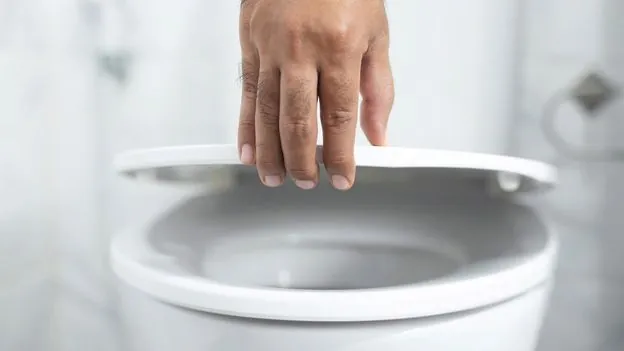
Are Toilet Seats Really a Health Hazard? The Truth Revealed!
2025-08-18
Author: Li
The Toilet Seat Dilemma
When you plop down on a public toilet seat, a wave of worry might wash over you. How long do germs linger in these high-traffic areas? The sight and smells can make anyone feel uneasy, and you might find yourself employing all sorts of tricks to avoid contact—like flushing with your foot or covering the seat with toilet paper. But just how concerned should you be about catching diseases from a toilet seat?
What You Won't Catch
According to Jill Roberts, a public health and microbiology expert at the University of South Florida, while it's theoretically possible to contract diseases from a toilet seat, the actual risk is incredibly low. Sexually transmitted diseases (STDs) like gonorrhea or chlamydia simply do not survive long outside the body, especially not on cold toilet seats. The viruses require direct contact with bodily fluids, so the odds of transmission from a toilet seat are nearly non-existent.
Roberts argues that if toilet seats were a common vector for STDs, we would see infections widespread among all demographics, including those with no sexual history. Bloodborne diseases are similarly unlikely to transmit via toilet seats, as contamination with blood would generally be visible, prompting users to avoid it.
What You Might Catch
However, there are exceptions. Human papillomavirus (HPV), responsible for genital warts, can survive on surfaces for up to a week. Though it requires a compromised skin barrier to infect, caution is still warranted. Genital herpes could also potentially be shed onto a seat during an outbreak, but again, the chances of transmission in this manner are considered low.
To Cover or Not to Cover?
Many people choose to drape toilet seats with paper or use a seat cover before sitting down. A 2023 poll showed that while 63% of Americans sit down in public restrooms, about half of those will cover the seat first. However, experts suggest this may not offer much protection, as germs can seep through porous materials.
Moreover, squatting might cause the very problems you’re trying to avoid. Clinical specialists warn that hovering can strain pelvic muscles, potentially leading to urinary tract infections (UTIs). The actual danger of toilet seats lies not in direct contact, but in how your hands interact with them.
The Real Bathroom Risks
The bigger threat in bathrooms comes from your hands. Dirty hands can pick up pathogens from toilet seats and then transfer them to your face, leading to illnesses like gastrointestinal infections from bacteria such as E. coli or norovirus, which can survive on surfaces for extended periods and are notoriously contagious.
Regular cleaning of public restrooms significantly lowers the risk of contamination. In fact, studies show that bathrooms are often cleaner than commonly used areas like computer labs. So, you might be safer using a public restroom than your own.
Avoiding the Germs: Practical Tips
For enhanced safety, avoid lingering in a bathroom right after someone else has used it, and consider flushing before leaving the stall to minimize the risk of airborne germs. Also, steer clear of using your phone while on the toilet to avoid transferring pathogens.
The golden rule? Always wash your hands thoroughly after using the facilities. Many people do not wash for the recommended 20 seconds, which is crucial in preventing the spread of germs. An extra layer of protection with hand sanitizer can further reduce your risk.


 Brasil (PT)
Brasil (PT)
 Canada (EN)
Canada (EN)
 Chile (ES)
Chile (ES)
 Česko (CS)
Česko (CS)
 대한민국 (KO)
대한민국 (KO)
 España (ES)
España (ES)
 France (FR)
France (FR)
 Hong Kong (EN)
Hong Kong (EN)
 Italia (IT)
Italia (IT)
 日本 (JA)
日本 (JA)
 Magyarország (HU)
Magyarország (HU)
 Norge (NO)
Norge (NO)
 Polska (PL)
Polska (PL)
 Schweiz (DE)
Schweiz (DE)
 Singapore (EN)
Singapore (EN)
 Sverige (SV)
Sverige (SV)
 Suomi (FI)
Suomi (FI)
 Türkiye (TR)
Türkiye (TR)
 الإمارات العربية المتحدة (AR)
الإمارات العربية المتحدة (AR)